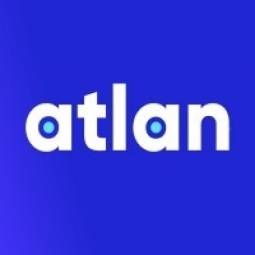Technology Category
- Analytics & Modeling - Predictive Analytics
- Platform as a Service (PaaS) - Application Development Platforms
Applicable Industries
- Buildings
- E-Commerce
Applicable Functions
- Warehouse & Inventory Management
Use Cases
- Picking, Sorting & Positioning
- Time Sensitive Networking
Services
- Data Science Services
- System Integration
About The Customer
Founded in 2010, TechStyle Fashion Group is a fashion retailer with a portfolio of five brands — Fabletics, Savage X Fenty, JustFab, FabKids, and ShoeDazzle. By integrating data science and personalization with a membership model, the company has grown to become one of the world’s largest membership-based fashion companies, boasting 5.5 million members and over $750 million in annual revenue. TechStyle has built its business model around embedding data across its operations, offering personalized customer experiences on its website, digital supply chains rooted in predictive analytics, and warehouses run on IoT devices. Each brand within TechStyle has its own embedded Analytics Team, and the Data Platforms Team creates and manages common data systems.
The Challenge
TechStyle, a fashion retailer with a portfolio of five brands, faced a significant challenge in early 2020. The company, which has built its business model around embedding data across its operations, decided to overhaul its common systems and roll out a new data warehouse. This was a daunting task due to legacy backends, a relatively new team, and a sudden shift to remote work due to the COVID-19 pandemic. TechStyle uses a 'hub-and-spoke analytics model', where each brand has its own embedded Analytics Team, and the Data Platforms Team creates and manages common data systems. However, the company had been struggling with making data discoverable and understandable to everyone, not just long-time team members. The documentation for their systems was often limited or non-existent, and the growth of data sources that weren’t owned by TechStyle’s central data team added to the confusion and complexity. The challenge was further compounded when the company had to shift to remote work, disrupting the informal information flow that worked naturally in the office.
The Solution
To tackle these challenges, TechStyle decided to move its systems to a Snowflake data warehouse and implement Atlan, a unified data workspace. The company opted for an ELT style of data engineering, where they load the data as-is from the source. Once the raw data is loaded, TechStyle uses a hybrid approach to model whatever needs to be modeled and leave the rest untouched. The company also prioritized data documentation from the beginning of the project. They integrated Atlan with their new modern data stack — Snowflake, Tableau, Apache Airflow, and Git — and started building a knowledge management process as part of the rollout of the new data warehouse. TechStyle used an iterative process to build their documentation from scratch. They started with a minimum viable product (MVP), tested a few cases, learned from the results, and carried out a series of sprints to continue building new documentation for other tables and columns in the EDW, all while refining the documentation standards.
Operational Impact

Case Study missing?
Start adding your own!
Register with your work email and create a new case study profile for your business.
Related Case Studies.

Case Study
Energy Saving & Power Monitoring System
Recently a university in Taiwan was experiencing dramatic power usage increases due to its growing number of campus buildings and students. Aiming to analyze their power consumption and increase their power efficiency across 52 buildings, the university wanted to build a power management system utilizing web-based hardware and software. With these goals in mind, they contacted Advantech to help them develop their system and provide them with the means to save energy in the years to come.

Case Study
Intelligent Building Automation System and Energy Saving Solution
One of the most difficult problems facing the world is conserving energy in buildings. However, it is not easy to have a cost-effective solution to reduce energy usage in a building. One solution for saving energy is to implement an intelligent building automation system (BAS) which can be controlled according to its schedule. In Indonesia a large university with a five floor building and 22 classrooms wanted to save the amount of energy being used.

Case Study
Powering Smart Home Automation solutions with IoT for Energy conservation
Many industry leaders that offer Smart Energy Management products & solutions face challenges including:How to build a scalable platform that can automatically scale-up to on-board ‘n’ number of Smart home devicesData security, solution availability, and reliability are the other critical factors to deal withHow to create a robust common IoT platform that handles any kind of smart devicesHow to enable data management capabilities that would help in intelligent decision-making

Case Study
Protecting a Stadium from Hazardous Materials Using IoT2cell's Mobility Platform
There was a need for higher security at the AT&T Stadium during the NFL draft. There was a need to ensure that nuclear radiation material was not smuggled inside the stadium. Hazmat materials could often be missed in a standard checkpoint when gaining entry into a stadium.

Case Study
Commercial Building Automation Boosts Energy Efficiency
One of the challenges to building automation is the multitude of non-interoperable communications protocols that have evolved over the years. Buildings have several islands of automation. Bridging the islands of different automation without losing the considerable investment in each specialized control network is the main focus in this solution.








